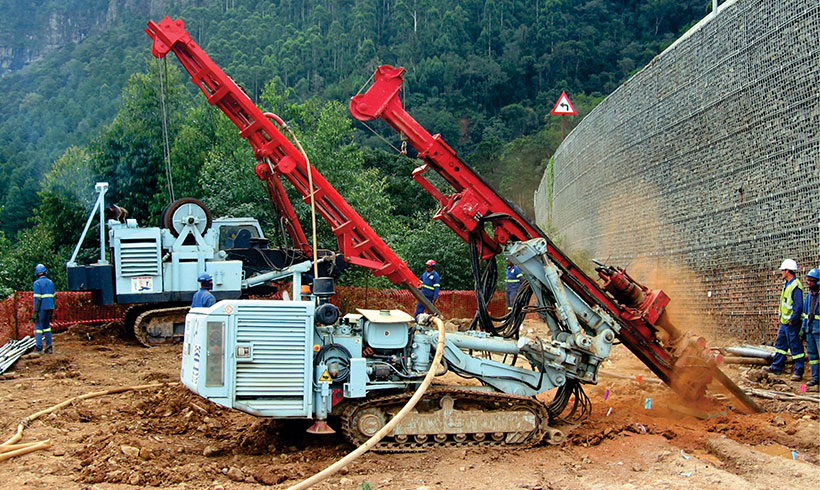An Unbiased View of Geotechnical Engineering For Construction Projects
7 Easy Facts About Geotechnical Engineering For Construction Projects Explained
Table of ContentsFacts About Geotechnical Engineering For Construction Projects UncoveredRumored Buzz on Geotechnical Engineering For Construction ProjectsGeotechnical Engineering For Construction Projects - The FactsGeotechnical Engineering For Construction Projects - An OverviewSome Known Factual Statements About Geotechnical Engineering For Construction Projects What Does Geotechnical Engineering For Construction Projects Mean?
These attributes have to be checked out by geotechnical engineers to anticipate their activities under various situations., making this analysis required., in enhancement to how they interact with buildings that have actually been set up on or within them, is one of the primary explanations for why geotechnical engineering is essential.
Environmental security is accomplished with geotechnical design. Expertise in air, water, and dirt top quality upkeep is placed to make use of by geotechnical designers to decrease the negative effects of jobs.
To sum up, geotechnical engineering is an essential self-control that protects the strength and integrity of civil framework. Geotechnical engineers contribute to making structure projects reliable all over the globe by comprehending the behaviour of planet materials and using ideal preparation methods.
Some Known Questions About Geotechnical Engineering For Construction Projects.
The foundational security of any type of project is critical. Geotechnical design plays a critical function in guaranteeing that frameworks are improved solid ground, literally and figuratively. By checking out soil, rock, and subsurface problems, geotechnical engineers give essential understandings that aid in the style, construction, and upkeep of buildings and framework.

4 Easy Facts About Geotechnical Engineering For Construction Projects Shown
Research laboratory screening: Determining the buildings of soil and rock. Field screening: Performing tests on-site to evaluate problems. Analysis and style: Making use of data to create foundations, preserving wall surfaces, passages, and various other frameworks. A number of top-level building tasks have actually effectively utilized geotechnical design to guarantee their stability and security. For instance:: The world's highest building required a deep understanding of the underlying geology.

As a leader in geotechnical design, BECC Inc. is committed to providing innovative and moved here reliable remedies that satisfy the highest standards of quality and safety., a mechanical engineer and geologist.
Not known Facts About Geotechnical Engineering For Construction Projects
Terzaghi also created the structure for theories of birthing capacity of structures, and the theory for forecast of the price of negotiation of clay layers because of combination. Afterwards, Maurice Biot fully developed the three-dimensional dirt loan consolidation theory, expanding the one-dimensional version formerly established by Terzaghi to more basic theories and introducing the collection of basic equations of Poroelasticity.
Geotechnical designers examine and identify the buildings of subsurface conditions and products. They likewise develop matching earthworks and preserving frameworks, passages, and framework structures, and might supervise and assess sites, which might further entail site tracking as well as the risk assessment and reduction of natural hazards - Geotechnical Engineering for Construction Projects. Geotechnical designers and design rock hounds do geotechnical investigations to obtain details on the physical homes of dirt and rock underlying and surrounding to a website to develop earthworks and structures for proposed frameworks and for the repair of distress to earthworks and structures created by subsurface problems.
What Does Geotechnical Engineering For Construction Projects Mean?
Geologic mapping and interpretation of geomorphology are commonly completed in assessment with a rock hound or design geologist. Subsurface exploration typically entails in-situ screening (for instance, the common infiltration test and cone infiltration test). The excavating of test pits and trenching (specifically for finding mistakes and slide planes) might additionally be used to learn more about dirt problems at depth. , which uses a thick-walled split spoon sampler, is the most usual means to gather disturbed samples.

If the user interface between the mass and the base of an incline has a complicated geometry, slope stability evaluation is tough and mathematical option methods are needed. Generally, the interface's specific geometry is unidentified, and a simplified user interface geometry is presumed. Finite inclines need three-dimensional designs to be assessed, so most inclines are examined presuming that they are considerably wide and can be represented by two-dimensional designs.
6 Easy Facts About Geotechnical Engineering For Construction Projects Described
Developing the design based on a working theory of actions expected under the most likely problems. Option of look what i found quantities to be observed as building profits and calculating their prepared for worths based on the working theory under the most unfavorable conditions.
Measurement of quantities and evaluation of real problems. Style modification per real problems The observational approach is appropriate for building that has currently my latest blog post started when an unexpected growth happens or when a failure or mishap looms or has currently happened. It is improper for projects whose style can not be changed during construction.